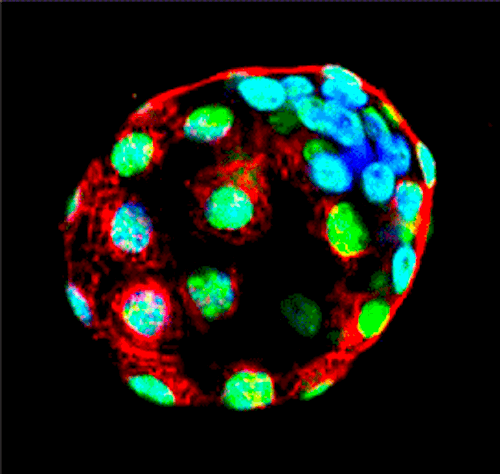|
|
Developmental Biology - Placental Development
Food for Thought
Drinking alcohol even before conception damages placenta...
Alcohol consumed during pregnancy is linked to poor growth of the placenta, causing conditions such as fetal growth restriction and low birth weight.
Although most women stop drinking once they know they are pregnant, the specific effects of alcohol during the initial stages of pregnancy, even as early as just before conception, is less understood. Now, Dr Jacinta Kalisch-Smith together with Professor Karen Moritz at the University of Queensland in Australia have investigated the impact of alcohol consumption on the early placenta in pregnancy.
Their research shows how in rats given alcoholic beverages around the time of conception, the growth in size of their placentas is reduced significantly. This outcome provides new evidence for how some pregnancy-related conditions develop. The work has just been published in the scientific journal Development.
"We wanted to know whether early alcohol exposure could affect the development of the early embryo and the placenta. Using a rat model, we assessed the ability of the embryo to implant into the uterus, and, later, how well blood vessels formed in the placenta," explains Kalisch-Smith.
Using this approach, scientists studied changes that happen throughout the rat's pregnancy and found that even early exposure to alcohol (between 4 days before and 4 days after fertilisation) restricts growth and function of the placenta.
"Early alcohol exposure reduces blood vessel formation in the placenta, leading to fewer nutrients being delivered to the embryo," adds Kalisch-Smith.
Strikingly, the placentas of female embryos were particularly susceptible, with up to a 17% reduction in size and a 32% drop in blood vessel formation, limiting the ability of the placenta to transport nutrients.
"This helps to explain, in part, why babies exposed to alcohol in the womb are often born small. It is important to understand the causes of low birth weight, because it has been shown to be an independent risk factor for diseases later in adulthood, such as type 2 diabetes, hypertension and obesity."
Jacinta I. Kalisch-Smith PhD, School of Biomedical Sciences, Faculty of Medicine, The University of Queensland, St Lucia, Australia.
These observations provide an important basis for future research into pregnancy-associated conditions like fetal growth restriction. Kalisch-Smith continues: "The next part of this project is to see whether nutrient supplementation can reduce or even prevent the adverse effects of alcohol exposure."
Abstract
The development of pathologies during pregnancy, including pre-eclampsia, hypertension and fetal growth restriction (FGR), often originates from poor functioning of the placenta. In vivo models of maternal stressors, such as nutrient deficiency, and placental insufficiency often focus on inadequate growth of the fetus and placenta in late gestation. These studies rarely investigate the origins of poor placental formation in early gestation, including those affecting the pre-implantation embryo and/or the uterine environment. The current study characterises the impact on blastocyst, uterine and placental outcomes in a rat model of periconceptional alcohol exposure, in which 12.5% ethanol is administered in a liquid diet from 4 days before until 4 days after conception. We show female-specific effects on trophoblast differentiation, embryo-uterine communication, and formation of the placental vasculature, resulting in markedly reduced placental volume at embryonic day 15. Both sexes exhibited reduced trophectoderm pluripotency and global hypermethylation, suggestive of inappropriate epigenetic reprogramming. Furthermore, evidence of reduced placental nutrient exchange and reduced pre-implantation maternal plasma choline levels offers significant mechanistic insight into the origins of FGR in this model.
Authors
Jacinta I. Kalisch-Smith, Sarah E. Steane, David G. Simmons, Marie Pantaleon, Stephen T. Anderson, Lisa K. Akison, Mary E. Wlodek and Karen M. Moritz.
Funding
This project was funded by the National Health and Medical Research Council (NHMRC) (APP1046137). J.I.K.-S. is a recipient of an Australian Postgraduate Award scholarship. K.M.M. is a Senior Research Fellow of the NHMRC.
Return to top of page
| |
|
Jun 12 2019 Fetal Timeline Maternal Timeline News
 Drinking alcohol during the period before conception and into early pregnancy produces a number of sex-specific responses. Female embryos have defects in trophoblast giant cell differentiation (SEEN IN 3D IMAGE ABOVE AS CIRCLES ON PLACENTAL SURFACE) A reduction in giant cells is associated with reduced placental invasion and vascularisation. CREDIT University of Queensland
|



